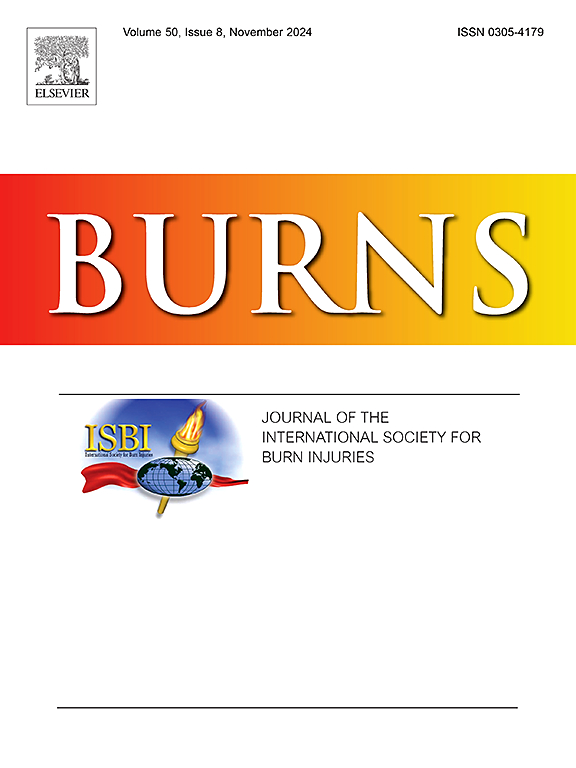Box A of HMGB1 improves second-degree burn wound healing in rats
IF 3.2
3区 医学
Q2 CRITICAL CARE MEDICINE
引用次数: 0
Abstract
Background
DNA damage accumulation delays burn wound healing. Our previous research demonstrated the function of Box A of HMGB1 in DNA protection, generating youth-DNA gaps. Overexpression of youth-DNA gaps enhances DNA durability and decreases endogenous DNA damage. Box A-expressing plasmid transfection is a new DNA-editing technology that prevents DNA damage. Thus, we hypothesized that Box A is a curative agent that improves burn wound healing.
Methods
In this study, we used a Box A plasmid coated with calcium phosphate nanoparticles (Ca-P) to treat burn wounds in rats. Second-degree burns were created on the backs of the rats. Three groups were used in this study: control (saline), saline + Ca-P (control), and Box A plasmid (n = 15 rats/group). The wounds were photographed 0, 7, 14, 21, and 28 days after wound induction and the burned areas were measured using Image J software. Burned skin tissue sections were analyzed for youth-DNA gap levels, subjected to histological and immunochemical analyses, and then scored according to the expression level of the DNA damage markers γH2AX and 8-OhdG.
Results
We observed improved wound healing in Box A plasmid-treated wounds from days 14 to 28 after injury (P < 0.001). A significant improvement in the total pathological score and DNA gaps in the Box A plasmid-treated group was observed at 14–28 days, with a peak on day 14 (P < 0.01) compared with that of the normal saline and calcium phosphate nanoparticle treated group. The expression of γH2AX and 8-OhdG was also decreased in the Box A group compared to controls on days 14–28, with the largest differences in expression levels observed on days 14 and 21.
Conclusions
Our results demonstrated that by producing youth-DNA gaps, Box A plasmid may be a potential therapeutic target in burn wound treatment.
求助全文
约1分钟内获得全文
求助全文
来源期刊

Burns
医学-皮肤病学
CiteScore
4.50
自引率
18.50%
发文量
304
审稿时长
72 days
期刊介绍:
Burns aims to foster the exchange of information among all engaged in preventing and treating the effects of burns. The journal focuses on clinical, scientific and social aspects of these injuries and covers the prevention of the injury, the epidemiology of such injuries and all aspects of treatment including development of new techniques and technologies and verification of existing ones. Regular features include clinical and scientific papers, state of the art reviews and descriptions of burn-care in practice.
Topics covered by Burns include: the effects of smoke on man and animals, their tissues and cells; the responses to and treatment of patients and animals with chemical injuries to the skin; the biological and clinical effects of cold injuries; surgical techniques which are, or may be relevant to the treatment of burned patients during the acute or reconstructive phase following injury; well controlled laboratory studies of the effectiveness of anti-microbial agents on infection and new materials on scarring and healing; inflammatory responses to injury, effectiveness of related agents and other compounds used to modify the physiological and cellular responses to the injury; experimental studies of burns and the outcome of burn wound healing; regenerative medicine concerning the skin.
 求助内容:
求助内容: 应助结果提醒方式:
应助结果提醒方式:


